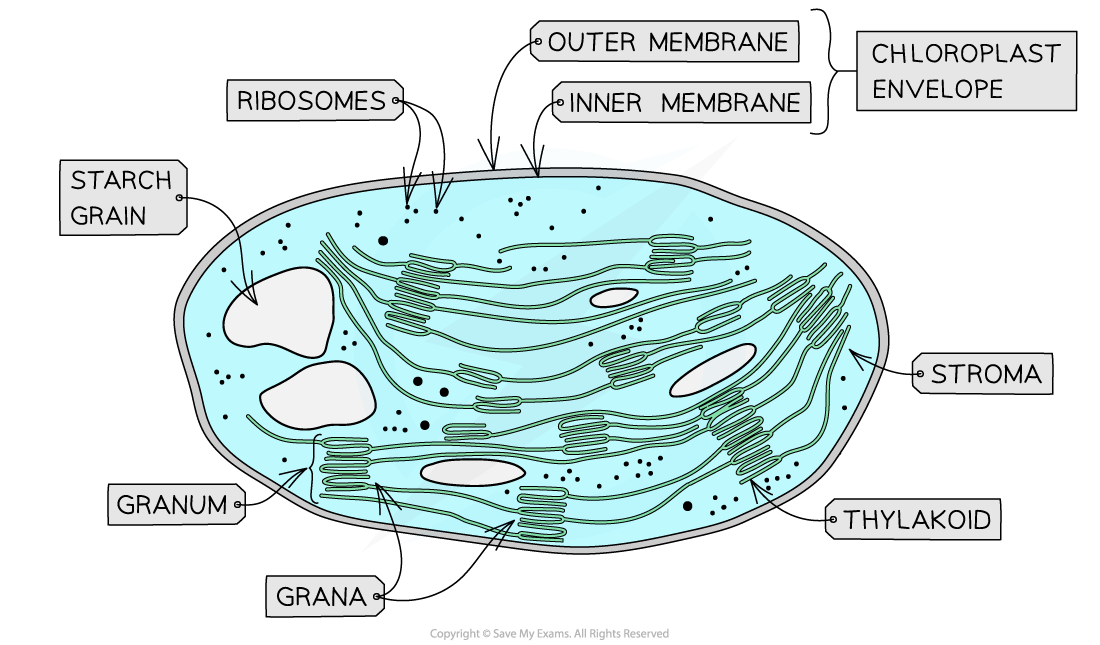Chloroplasts (Cambridge (CIE) A Level Biology): Revision Note
Exam code: 9700
Chloroplast structures & their functions
Chloroplasts are the organelles in plant cells where photosynthesis occurs
Each chloroplast is surrounded by a double-membrane envelope
Each of the envelope membranes is a phospholipid bilayer
Chloroplasts are filled with a fluid known as the stroma
The stroma is the site of the light-independent stage of photosynthesis
A separate system of membranes is found in the stroma
This membrane system is the site of the light-dependent stage of photosynthesis
The membrane contains the pigments, enzymes and electron carriers required for the light-dependent reactions
This membrane system consists of a series of flattened, fluid-filled sacs known as thylakoids
These thylakoids stack up to form structures known as grana (singular; granum)
Grana are connected by membranous channels called stroma lamellae, which ensure the stacks of sacs are connected but distanced from each other
The membranes of the grana create a large surface area to increase the number of light-dependent reactions that can occur
This membrane system provides a large number of pigment molecules in an arrangement that ensures as much light as necessary is captured
The stroma also contains small (70S) ribosomes, a loop of DNA and starch grains:
The loop of DNA codes for some of the chloroplast proteins (other chloroplast proteins are coded for by the DNA in the plant cell nucleus)
The proteins coded for by this loop of chloroplast DNA are produced at the 70S ribosomes
Sugars formed during photosynthesis are stored as starch inside starch grains

Examiner Tips and Tricks
Make sure you can identify the structures of a chloroplast on a diagram AND that you can explain the function of each of these structures.
It is also important to be able to describe the compartmentalisation within a chloroplast and how that separates the reactions of the light-dependent and the light-independent stages.

Unlock more, it's free!
Did this page help you?